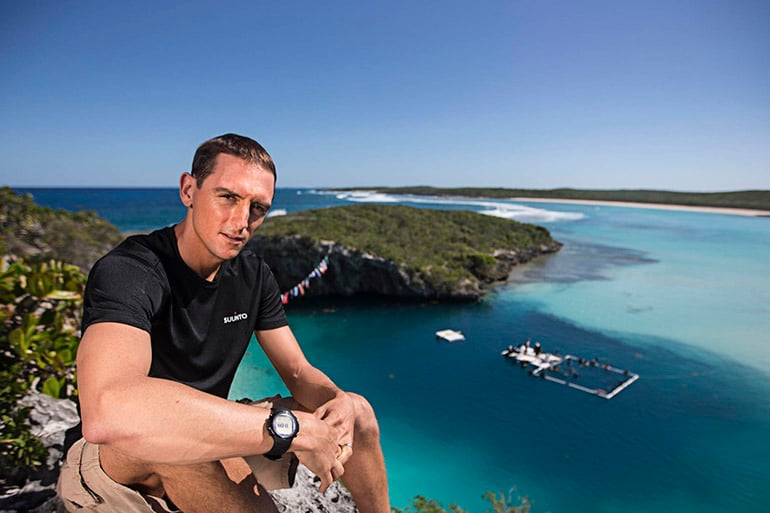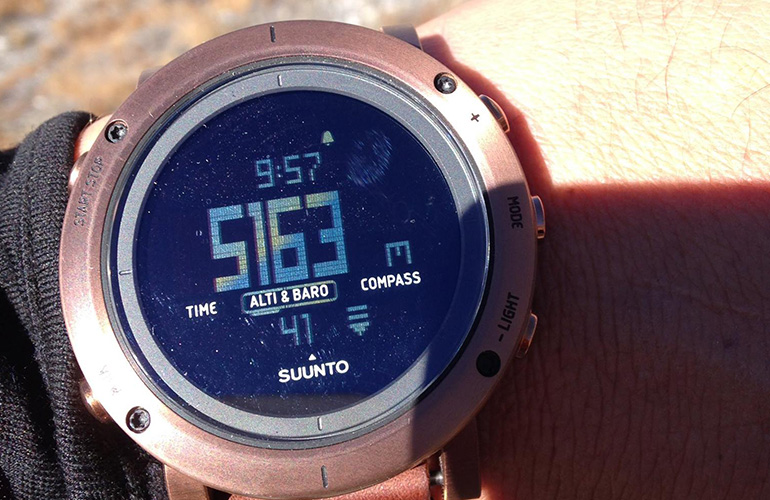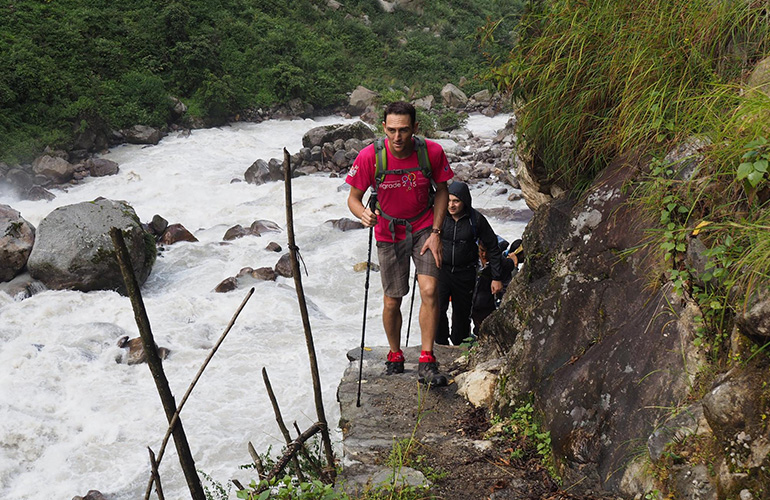Suunto ambassador and freediver William Trubridge has given his life to the sport of diving as deep into the ocean’s depths as any human can without scuba equipment. But he recently decided to explore the other end of the planet – the heights of the Himayalas. He trekked 300 km, with 10,000 m of vertical ascent. The longest day was 13 hours of hiking. We asked him what he learned at the top of the world.

Why did you go trekking in Nepal?
It was mainly to do something together with my father David and brother Sam, as we live in separate parts of the world. We chose the Himalayas, as my father loves the mountains, and neither Sam nor myself have seen those kinds of mountains.
"I think freediving training definitely has a crossover effect to mountain climbing."
Where were you?
We trekked to Kanchenjunga base camp in eastern Nepal. Kanchenjunga is the third highest mountain in the world, and one of the holiest. The remoteness of this area means there are few trekkers and even fewer amenities. This is exactly what we wanted.

At 5163 m, the atmosphere is half as dense as at sea level, meaning half the volume of oxygen per breath.
Vastly different environment than you’re used to – how was it?
It was humbling. I realised just how un-adapted my body is to that kind of world. After 12 years of only freediving training in the water my knees were unacquainted with any kind of impact, and the first day's gruelling descent paid its toll. In fact, all the descents were tough for me. I really enjoyed going uphill because I was able to push myself.
You’re used to having a lack of oxygen – how was the higher altitude for you?
The altitude wasn't a factor. Our ascent was very gradual, which allowed the body time to adapt. I think freediving training definitely has a crossover effect to mountain climbing by developing haemoglobin oxygen storage in the blood. Freediving training stimulates erythropoiesis, which is the generation of new red blood cells, in order to store and transfer more oxygen. This benefits all hypoxic activities, whether apnea or trekking at altitude. 
What did you learn?
It gave me an appreciation of volumes, and the vastness of the mountains, but also the seas. When looking up at a towering 7,000 m peak and thinking that huge mass could disappear in the huge well that is our planet's oceans it made me marvel at the scale of these environments.
What can freedivers learn from trekking or the mountains?
Trekking can be a kind of meditation, as the slow pace of changing scenery lulls your mind. It also gives you an appreciation for the 'other end of the spectrum' of our planet's ecosystem, and for the many other various forms that water can take: snow, rain, mist, waterfalls and rivers.